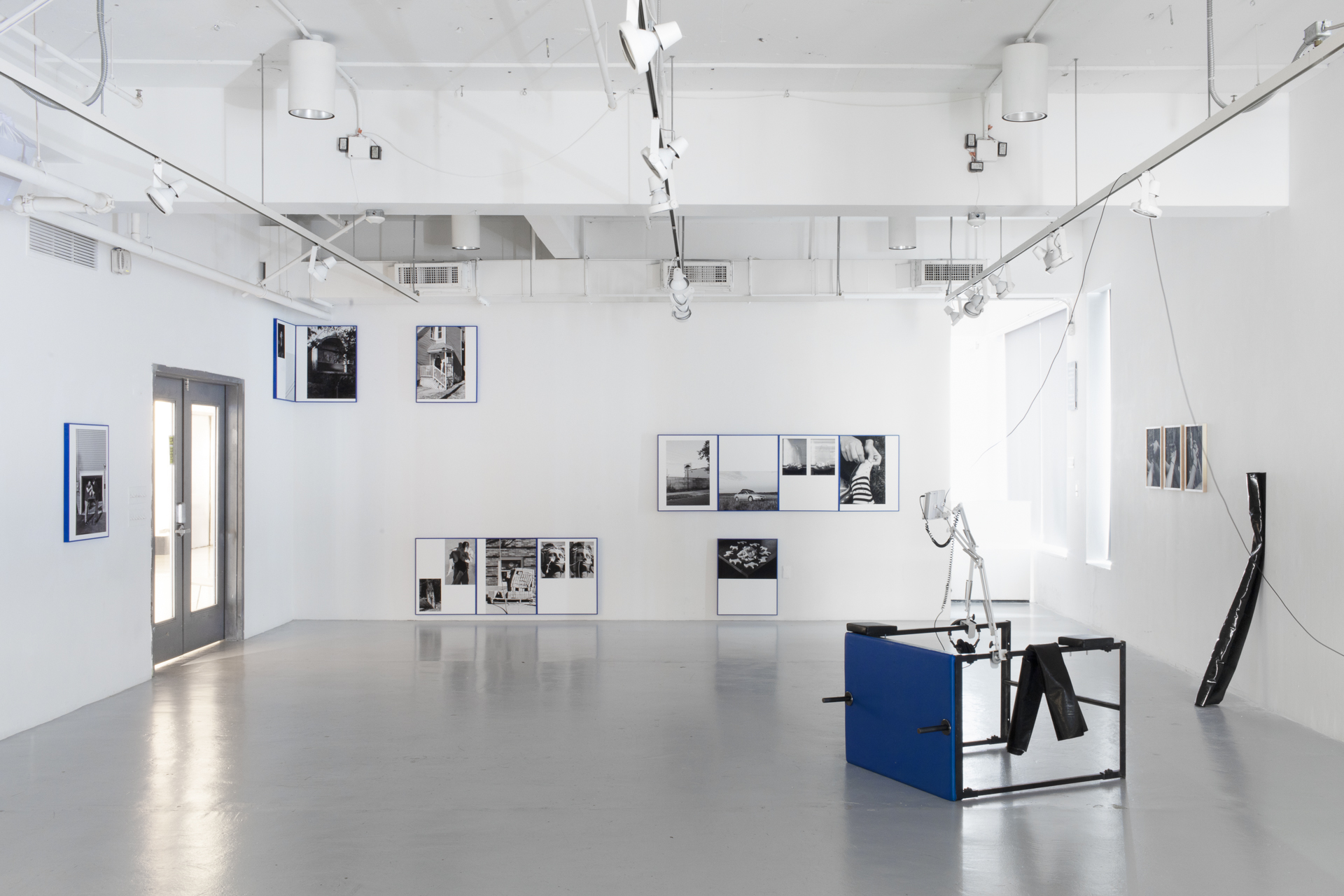

Max Gavrich’s photographs are unquiet. Often picturing still objects—a near-empty plastic sack of water bottles, a plug protruding from a wall, a string wrapped around telephone wires —the photographs nevertheless exude a muted restlessness, a liveness. Sunlight streams through the distended plastic, turning it into a glistening membrane. The taped cord makes a wound in the face of a Greek statue, its pixelated image distorted by the textured surface of the wall. The coiled string remembers the wind that hung it there. The line between thing and body, animate and inanimate matter, is strangely blurred.

Untitled (Rehearsal), Untitled (Wires), 2021
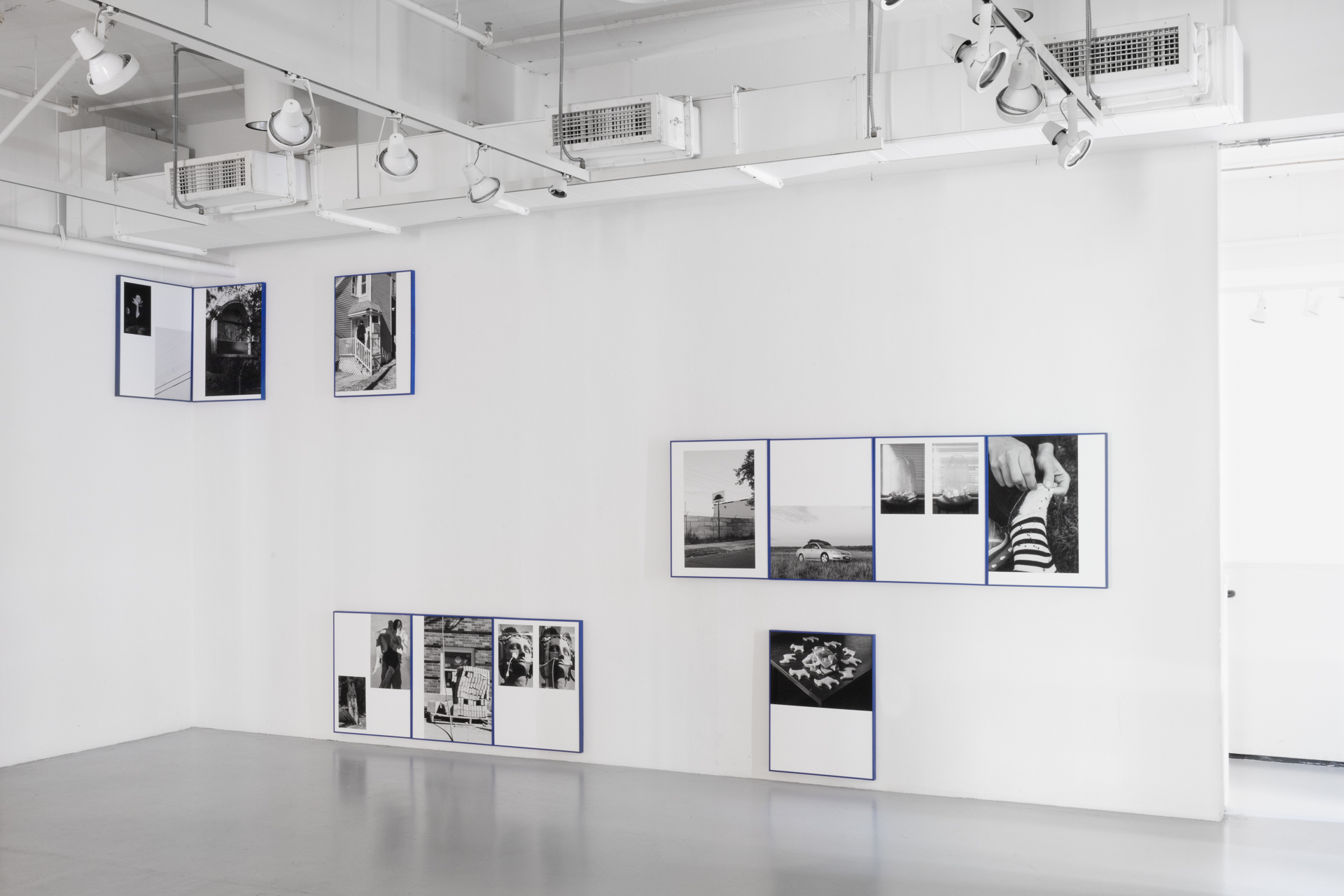
Necessary Inventions, 2021, dimensions variable, archival pigment prints in rubber-dipped steel frames.
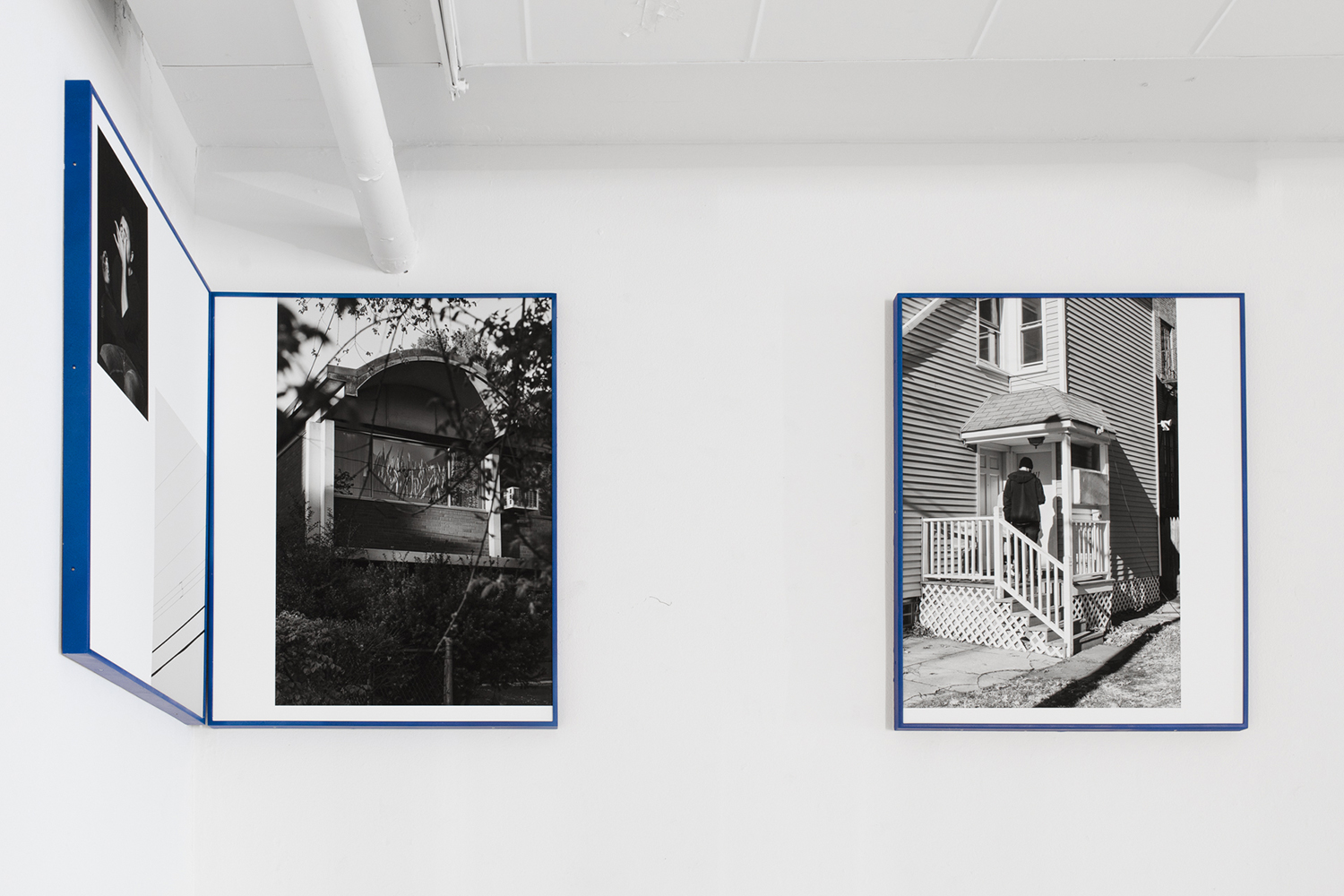
Necessary Inventions detail, 2021, dimensions variable, archival pigment prints in rubber-dipped steel frames.
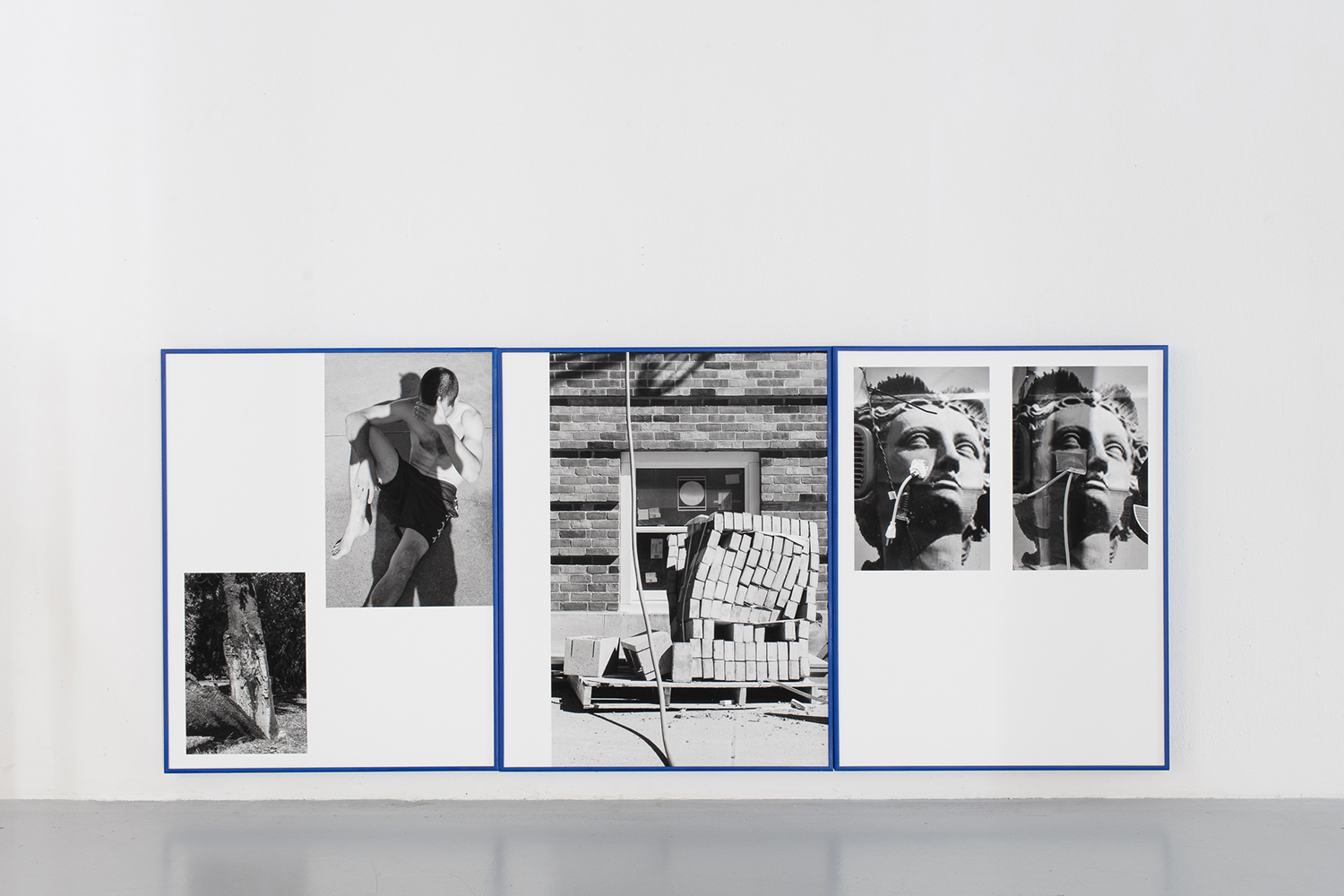
Necessary Inventions detail, 2021, dimensions variable, archival pigment prints in rubber-dipped steel frames.
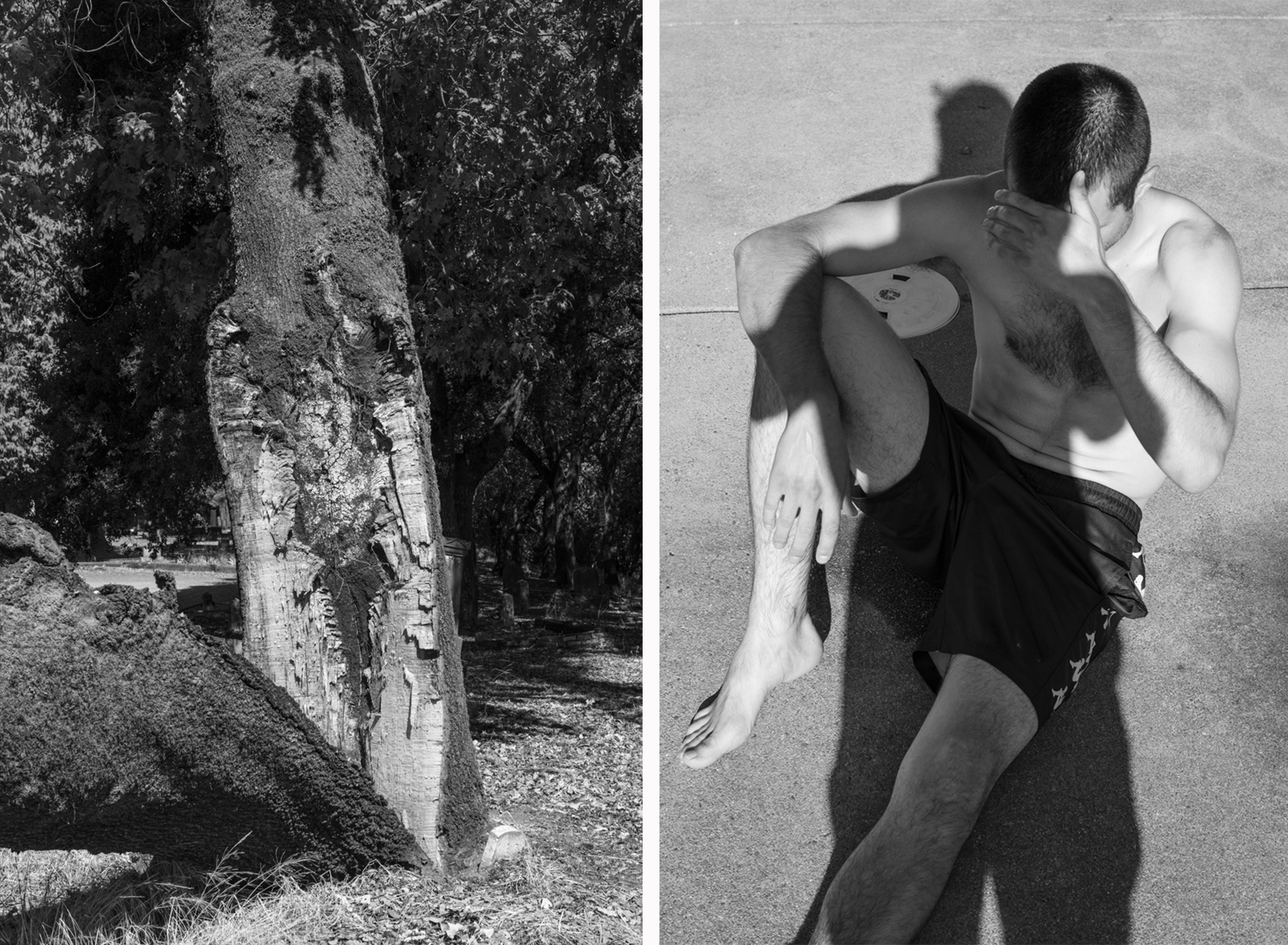

Untitled I and II (Patched Sign), 2021
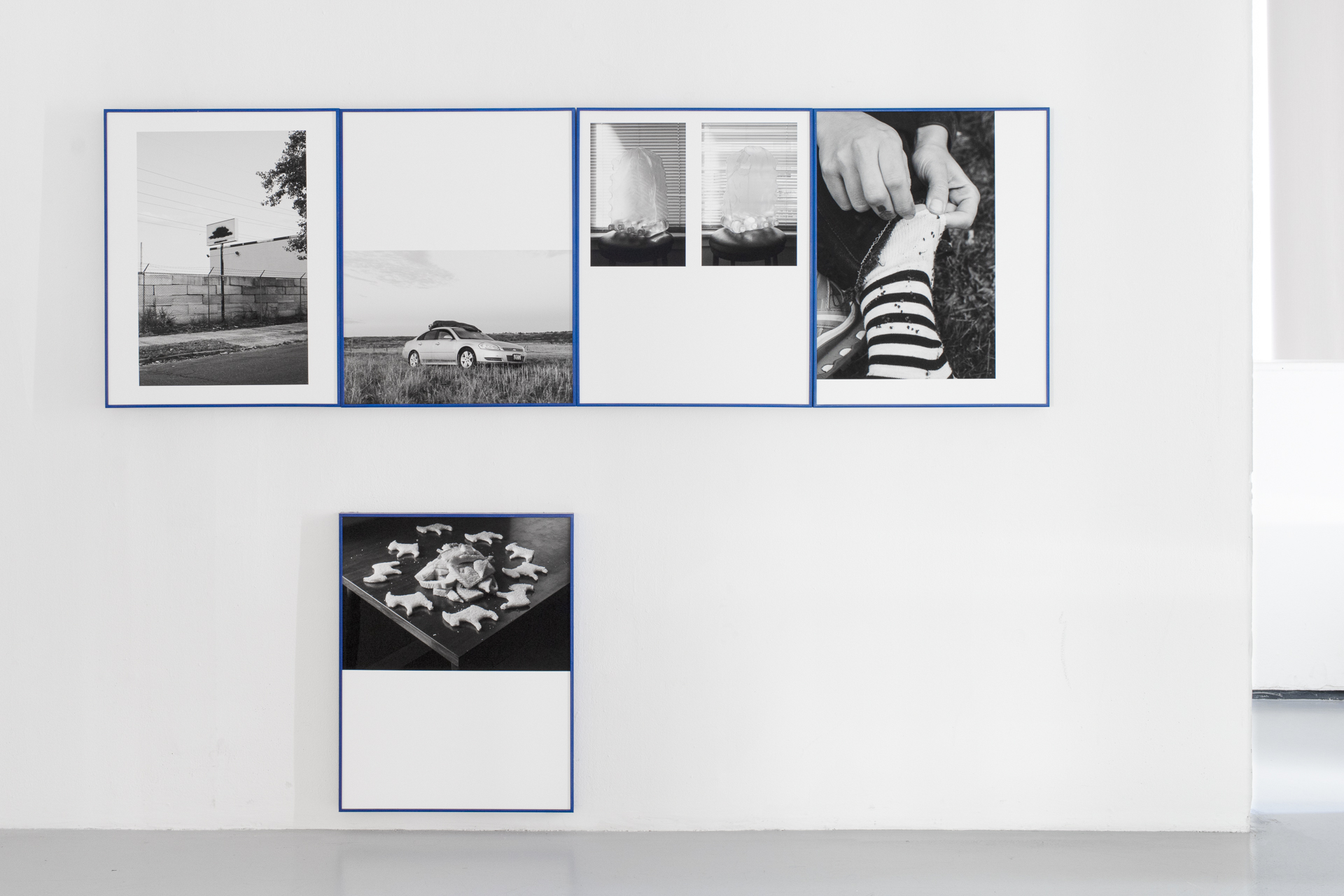
Necessary Inventions detail, 2021, dimensions variable, archival pigment prints in rubber-dipped steel frames.
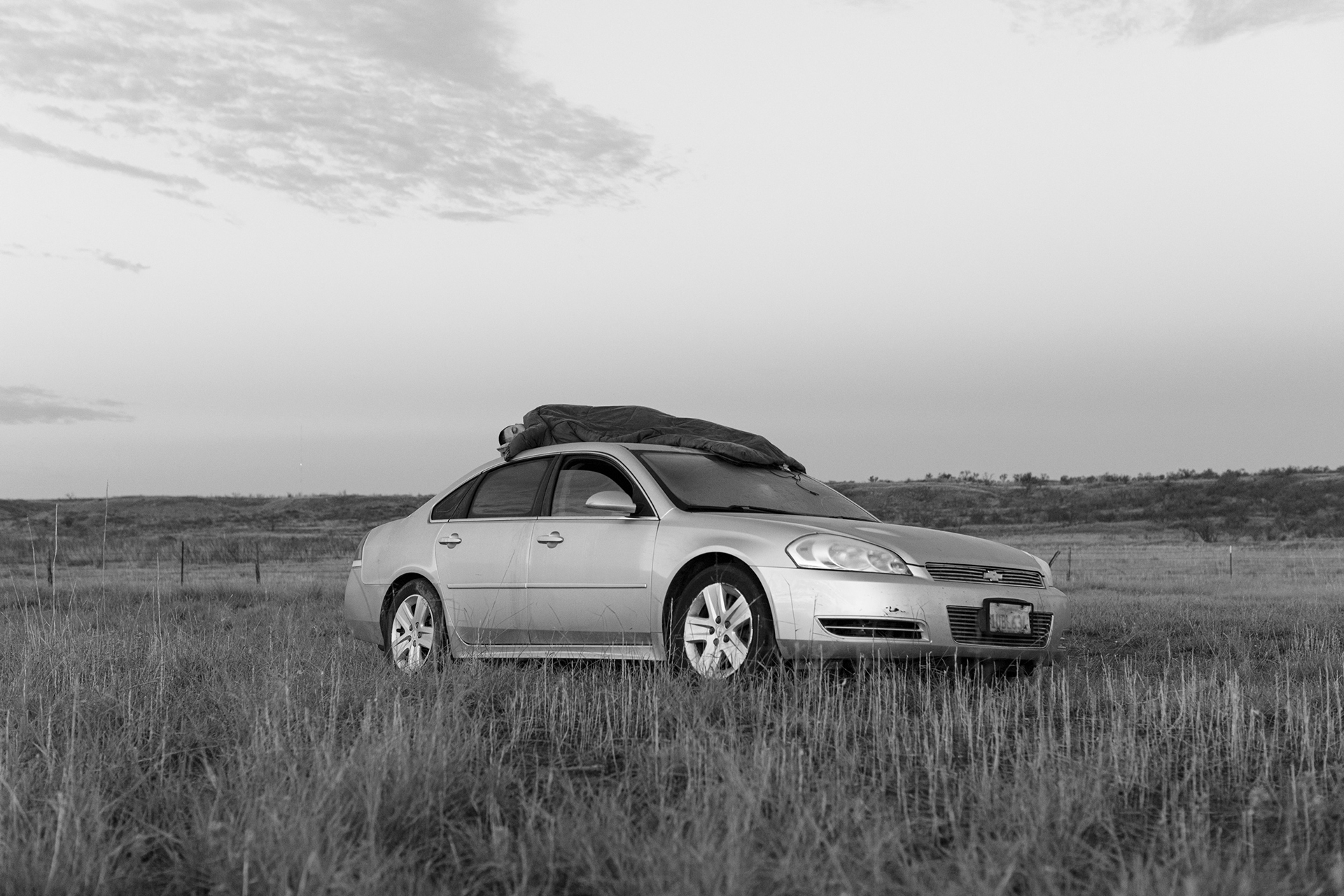
Untitled (Sleeping Bag), 2021

Untitled I and II (Water Bottles and Blinds), 2021
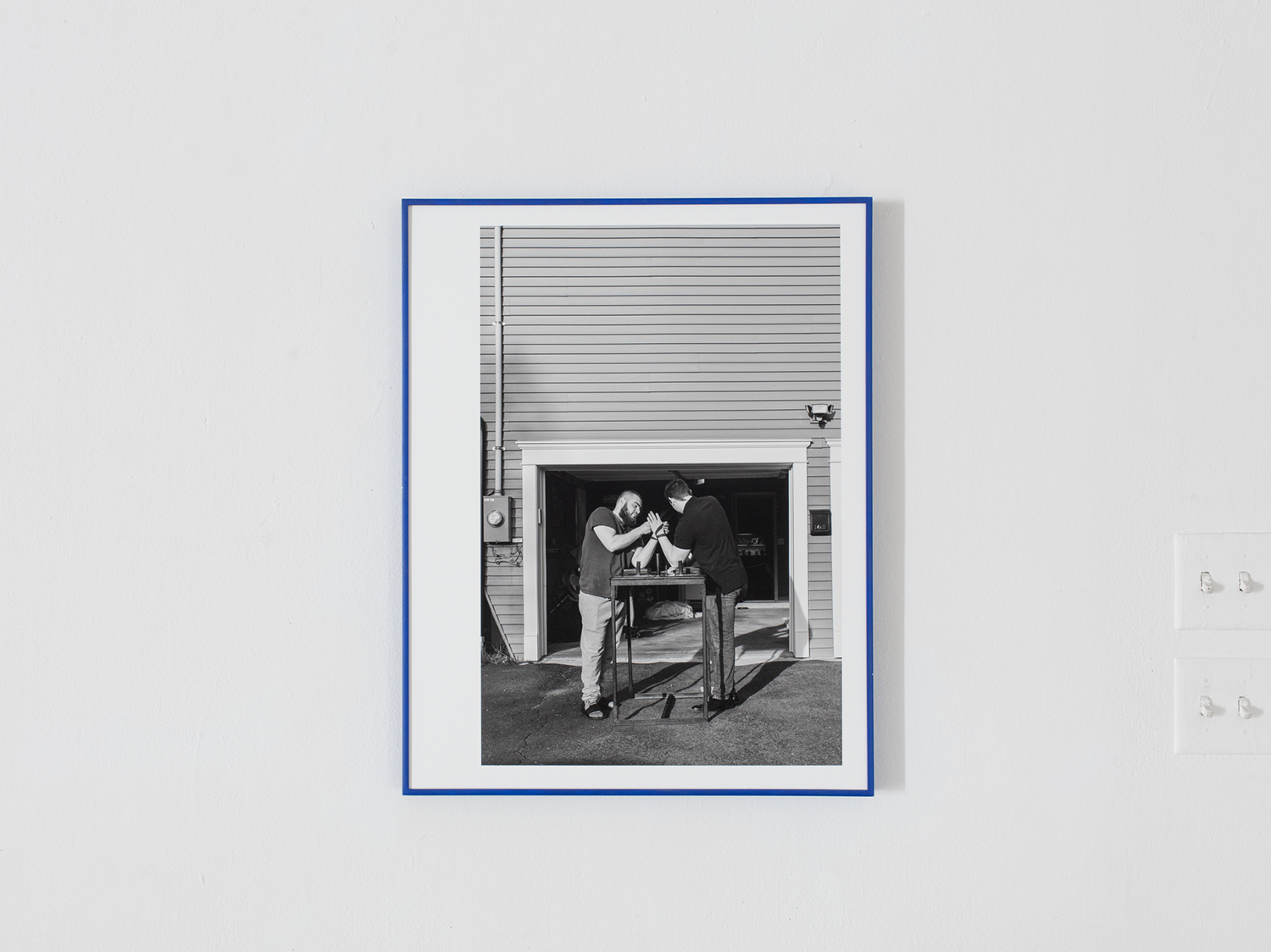
Necessary Inventions detail, 2021, dimensions variable, archival pigment prints in rubber-dipped steel frames.
Gavrich took several of the photographs on a cross-country road trip with a childhood friend. In one, their car sits in an empty, featureless field of scrub grass, his friend asleep on the roof. The sites Gavrich documents—a window filled with the licking tongues of snake plants, a listing heap of cinder blocks, a tree split by lightning, a graffitied-out sign—have a similarly anonymous, could-be-anywhere quality. Each is drained of any motion, as if the very air inside the image had congealed. Each image combines particularity and placelessness into a kind of dreamscape, utterly unreal and yet entirely ordinary.
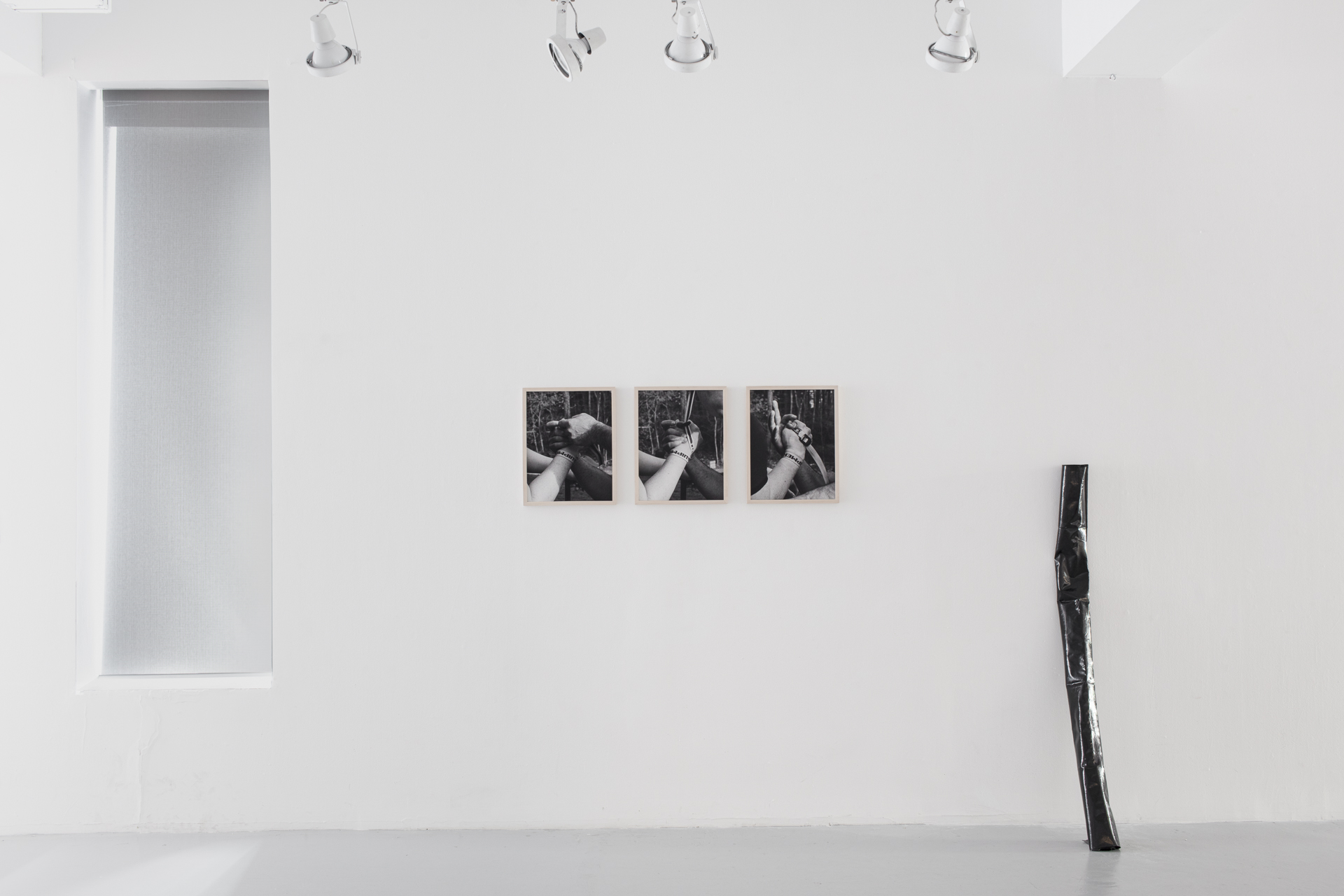
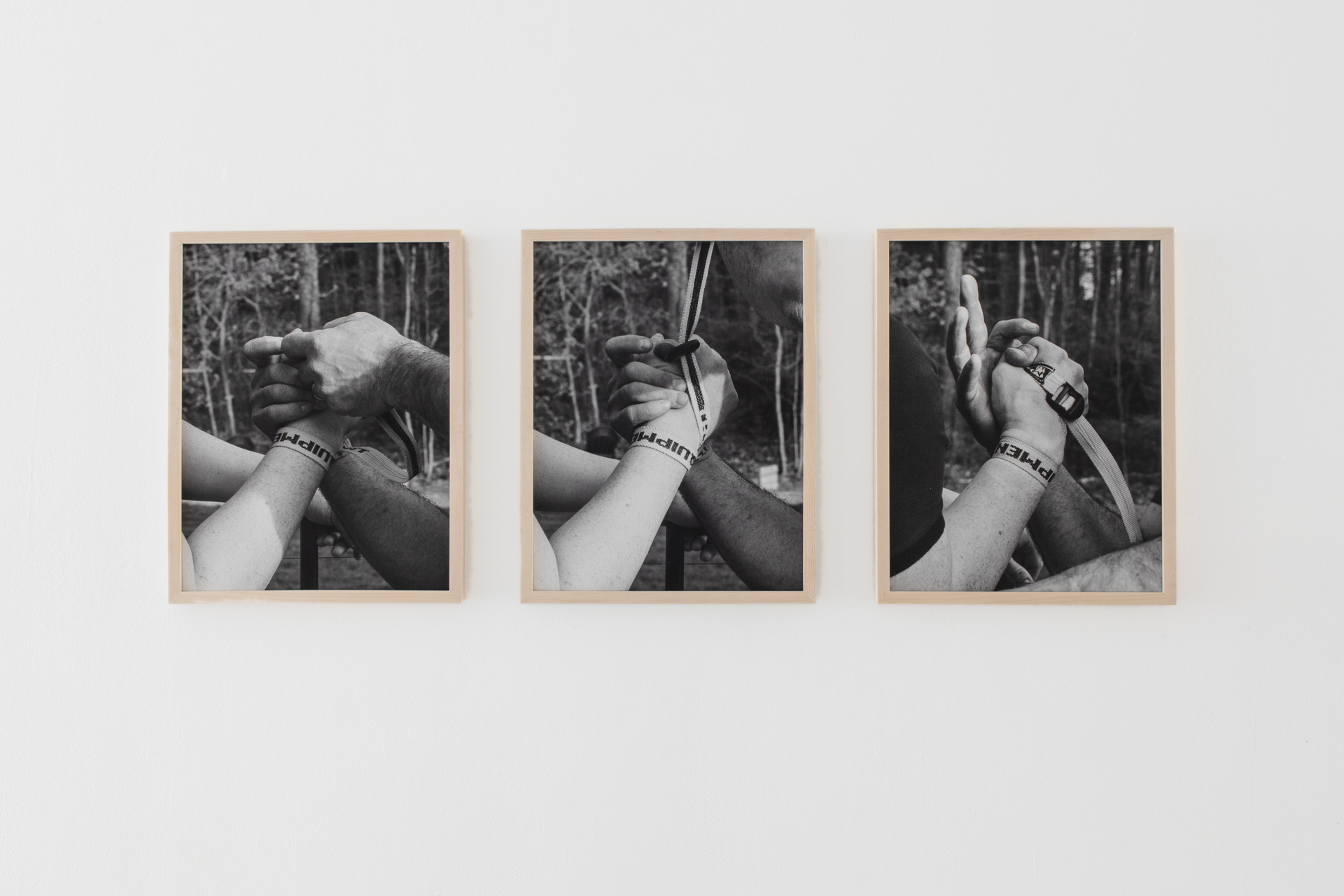
Untitled (Strap), 2021, 18 x 40", archival pigment prints in ash frames.
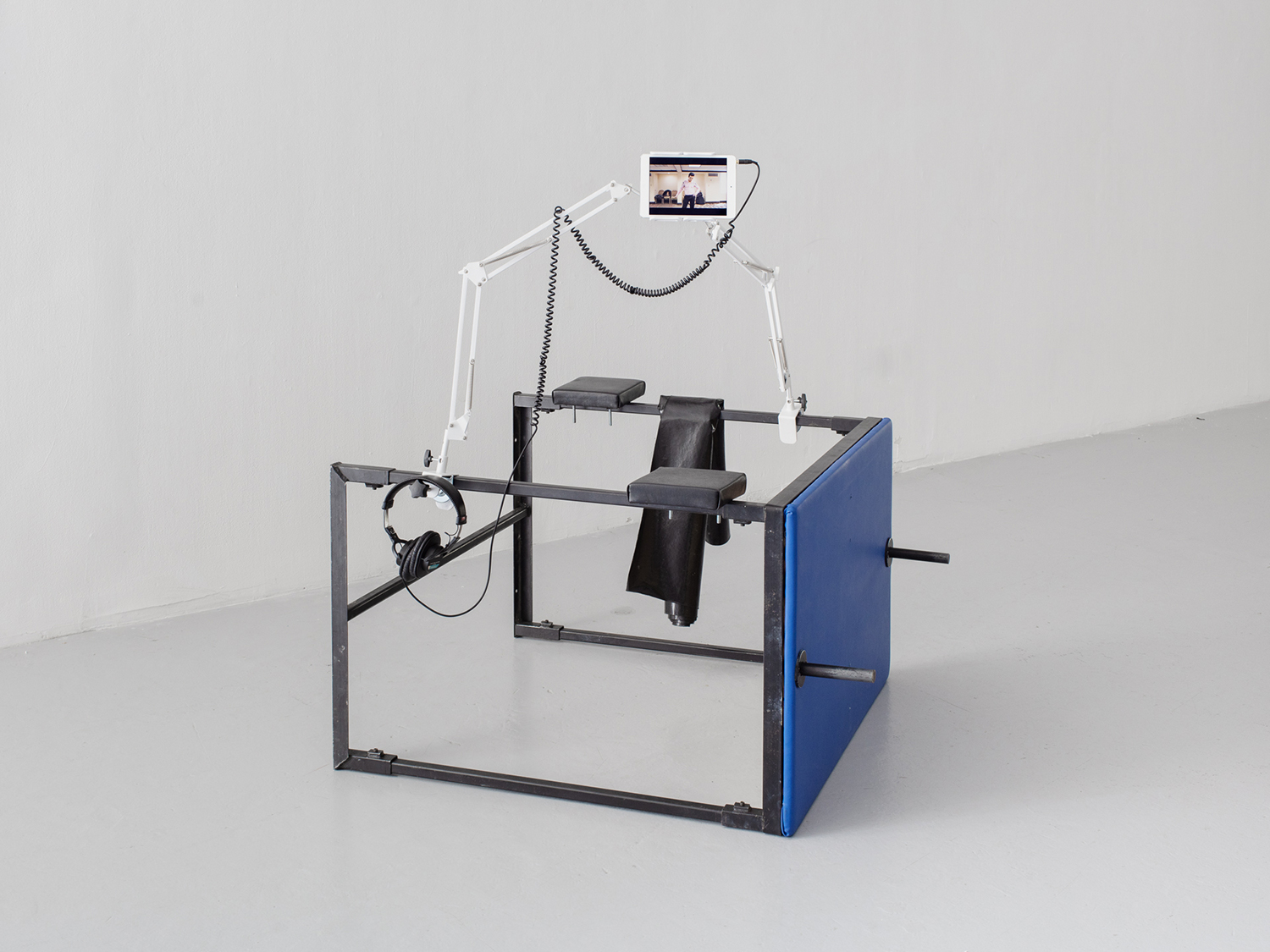
Warm Up (Impossible Dream), 2021, 36 x 52 x 46" (dimensions variable), steel arm wrestling table, marine polyvinyl, spill mats, mechanical tablet arms, iPad.

Impossible Dream (Warm Up) detail, 2021.
Impossible Dream (Warm Up), 2021.
Each photograph’s frame is coated in blue rubberized paint, the color and texture of which recall the sweat-wicking polyvinyl fabric used to cover gym and physical therapy mats. The simultaneous evocation of physical strength and physical vulnerability finds echoes in Gavrich’s photographs of spaces of male bonding and masculine performance. Hands wrapped together and tied with bands, arm wrestlers square off in what might be combat or might be an embrace. Another male figure, seated on a sidewalk, is at once alone and not, his companion’s presence marked only by the shadow that falls across his chest. A short film records the backstage practice of a young Elvis impersonator, learning the ritual gestures and rote choreography of canonical American manhood. There is a loneliness to his absorption, to this quiet, intense practice for an invisible audience. He sings softly to himself, the words too low for us to hear.
richardmaxgavrich.com
@rmaxgavrich
SORRY WE MISSED YOU
Yale School of Art’s 2021 Photography MFA thesis exhibition
Green Hall Gallery, 1156 Chapel Street, New haven, CT. May 10 through 16, 2021
Featuring work by: Mickey Aloisio, Ronghui Chen, tarah douglas, Jackie Furtado, Max Gavrich, Nabil Harb, Dylan Hausthor, Annie Ling, Alex Nelson, and Rosemary Warren.
Exhibition identity by Nick Massarelli and Anna Sagström, Graphic Design MFAs ‘21.
Installation photography by Liz Calvi, unless otherwise noted.
SORRY WE MISSED YOU
Yale School of Art’s 2021 Photography MFA thesis exhibition
Green Hall Gallery, 1156 Chapel Street, New haven, CT. May 10 through 16, 2021
Featuring work by: Mickey Aloisio, Ronghui Chen, tarah douglas, Jackie Furtado, Max Gavrich, Nabil Harb, Dylan Hausthor, Annie Ling, Alex Nelson, and Rosemary Warren.
Exhibition identity by Nick Massarelli and Anna Sagström, Graphic Design MFAs ‘21.
Installation photography by Liz Calvi, unless otherwise noted.